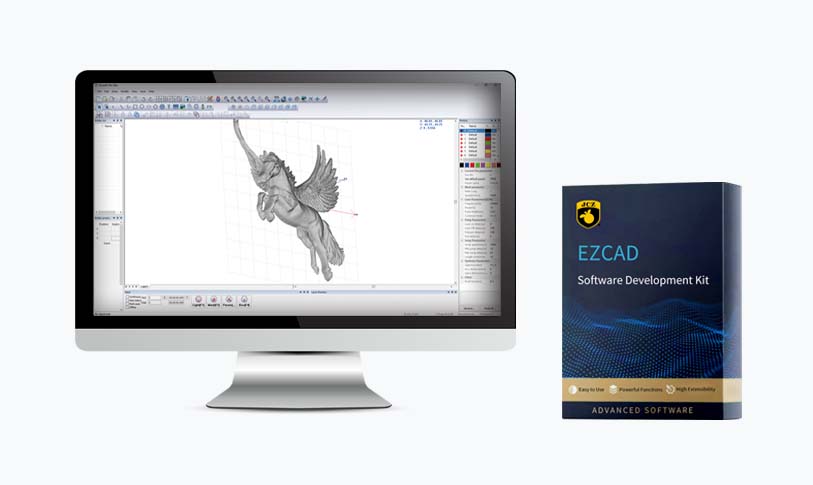
Unlocking Precision and Efficiency: How a Laser Controller Revolutionizes Modern Manufacturing and Engraving Processes
In today’s fast-paced industrial landscape, precision and efficiency are critical components that can make or break a business. One of the most innovative technologies that have emerged to enhance these elements is the laser controller. This sophisticated device not only improves the quality of laser-cutting and engraving processes but also significantly streamlines production workflows, reducing waste and operational costs.

Unlocking Precision and Efficiency: How a Laser Controller Revolutionizes Modern Manufacturing and Engraving Processes
A laser controller is essentially the brain behind laser machines, whether they’re used for cutting, engraving, marking, or welding. Unlike traditional machinery, which may require extensive manual setup and adjustments, a laser controller offers a digital interface that allows operators to input intricate designs and specifications directly. This means that the same machine can perform a variety of tasks without the need for significant reconfiguration, enhancing its versatility.
One of the most compelling advantages of using a laser controller in manufacturing is the precision it provides. Laser technology operates on the principle of focusing light energy into a narrow beam, which can then be directed with incredible accuracy. When combined with a high-quality laser controller, this technology allows for exceptionally detailed cuts and engravings. This level of precision is particularly beneficial in industries such as jewelry-making, automotive, and aerospace, where minute details can significantly influence the overall quality and functionality of a final product.
Moreover, a laser controller significantly reduces the margin of error in the production process. Traditional cutting and engraving techniques often rely on manual adjustments, which can lead to inconsistencies and defects. In contrast, the numerical control offered by a laser controller ensures that every cut or engraving is performed to exact specifications. This precision not only minimizes material waste but also enhances the overall quality of the finished product. As businesses strive to improve their quality assurance processes, the importance of using technology like a laser controller becomes increasingly evident.
Efficiency is another hallmark of laser controllers. Conventional engraving and cutting methods may require several steps and extensive setup times to achieve the desired results. Laser systems with advanced controllers can automate these processes, allowing for quick adaptations to changes in design or production volume. This means that manufacturers can respond more rapidly to market demands, thereby improving their competitiveness.
In addition to speed and precision, laser controllers offer substantial improvements in resource management. The ability to optimize material usage is a significant benefit for companies looking to minimize costs. The beam of a laser produces minimal waste as it can cut through materials with high efficiency, leaving tighter tolerances and cleaner edges than traditional methods. The software involved typically includes features that ensure optimal path planning, which prevents unnecessary movements of the laser head and further conserves energy and material.
The integration of a laser controller can also pave the way for greater creativity in design. Artists and designers can experiment with more complex and intricate patterns that would be nearly impossible to achieve through traditional means. As the boundaries of what is achievable in design continue to expand, businesses with laser controllers are well-positioned to lead in innovation, creating unique products that stand out in the marketplace.
Another aspect worth noting is the user-friendly nature of modern laser controllers. Many systems come equipped with intuitive software that simplifies the learning curve for operators, allowing even those with minimal technical training to effectively manage operations. With tutorials and customer support widely available, businesses can quickly teach staff to operate these advanced systems, further increasing efficiency and reducing downtime.
Lastly, as sustainability becomes a greater concern for consumers and businesses alike, the eco-friendly advantages of laser cutting and engraving should not be overlooked. The efficiency of laser controllers reduces energy consumption, and the precision of the cuts ensures that less material is wasted. Many organizations that adopt these technologies find themselves not only improving their bottom line but also aligning with a more sustainable model of operation.

Unlocking Precision and Efficiency: How a Laser Controller Revolutionizes Modern Manufacturing and Engraving Processes
In conclusion, the integration of laser controllers into manufacturing and engraving processes offers profound benefits in terms of precision, efficiency, and sustainability. As technology continues to advance, those who invest in these systems will likely find themselves at the forefront of innovation, capable of meeting the demands of a rapidly evolving marketplace. Whether you’re in automotive, aerospace, jewelry, or any other industry, embracing laser controller technology is a strategic move that can enhance both productivity and product quality, positioning your business for future success.laser co2 130w



